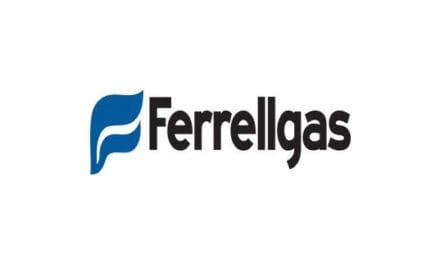Oil Futures Prices Rangebound Despite Category 4 Hurricane
- Latest EIA data bullish
- COVID-19 restrains prices
- Mu variant now appearing
- Natural gas prices approach major resistance
Alan Levine—Chairman, Powerhouse
(202) 333-5380
The Matrix
The weekly Energy Information Administration supply and demand report for the week ended August 27 did not reflect the devastating impact of Hurricane Ida. Ida made landfall on August 29 as a category 4 hurricane. The next EIA report is set to be released on September 9.
The most recent EIA report (released on Wednesday, August 25) was generally bullish. Overall demand for petroleum products was 22.8 million barrels daily, a record, boosted by the national effort to normalize economic activity.
Gasoline demand for the week was 9.6 million barrels daily, the same as during the previous week. Propane demand came in at 1.3 million barrels per day, a weekly gain of 230,000 barrels daily.
The loss of inventory continued. Commercial crude oil stocks lost 7.1 million barrels for the week, following on a series of reductions that now have gasoline inventories below the low end of the five-year average. A bearish note was sounded as domestic production of crude oil added another 100,000 barrels daily.
The re-emergence of COVID-19’s delta variant has thrown a spanner into bullish expectations. (A new variant, “Mu” is now emerging. The World Health Organization says Mu mutations could evade “immunity provided by a previous COVID-19 Infection or vaccination.”
OPEC+’s attitudes influence supply expectations. The group recently stated a continued commitment to its previously announced plan to increase output by 400,000 barrels per day monthly. These planned increases are intended to help meet expected demand growth. The increase of 400,000 barrels per day is intended to help meet expected demand growth. OPEC+ views the current rally in crude oil prices as a reaction to disrupted Mexican supply and the effects of Hurricane Ida.
The beginning of autumn finds an oil market in deficit. The implications for a bullish reaction are uncertain as COVID-19 continues to wreak havoc in regional markets. A break of resistance at $2.21 basis for the front-month contract is necessary for another significant bullish move in ULSD futures prices to develop.
Supply/Demand Balances
Supply/demand data in the United States for the week ended Aug. 27, 2021, were released by the Energy Information Administration.
Total commercial stocks of petroleum fell 13.6 million barrels during the week ended Aug. 27, 2021.
Commercial crude oil supplies in the United States decreased by 7.2 million barrels from the previous report week to 425.4 million barrels.
Crude oil inventory changes by PAD District:
PADD 1: Plus 0.1 million barrels to 8.9 million barrels
PADD 2: Plus 0.6 million barrels to 114.8 million barrels
PADD 3: Down 9.0 million barrels to 230.6 million barrels
PADD 4: Plus 0.5 million barrels to 24.9 million barrels
PADD 5: Plus 0.6 million barrels to 47.6 million barrels
Cushing, Oklahoma, inventories were up 0.8 million barrels from the previous report week to 34.5 million barrels.
Domestic crude oil production was up 100,000 barrels per day from the previous report week to 11.5 million barrels daily.
Crude oil imports averaged 6.34 million barrels per day, a daily increase of 183,000 barrels. Exports increased 228,000 barrels daily to 3.04 million barrels per day.
Refineries used 91.3% of capacity; 1.1 percentage points lower from the previous report week.
Crude oil inputs to refineries decreased 134,000 barrels daily; there were 15.938 million barrels per day of crude oil run to facilities. Gross inputs, which include blending stocks, fell 210,000 barrels daily to 16.549 million barrels daily.
Total petroleum product inventories fell 6.4 million barrels from the previous report week.
Gasoline stocks increased 1.3 from the previous report week; total stocks are 227.2 million barrels.
Demand for gasoline rose 5,000 barrels per day to 9.578 million barrels per day.
Total product demand increased 1.003 million barrels daily to 22.82 million barrels per day.
Distillate fuel oil stocks fell 1.7 million barrels from the previous report week; distillate stocks are at 136.7 million barrels. EIA reported national distillate demand at 4.39 million barrels per day during the report week, an increase of 286,000 barrels daily.
Propane stocks rose 0.5 million barrels from the previous report week; propane stocks are at 69.3 million barrels. The report estimated current demand at 1.316 barrels per day, an increase of 230,000 barrels daily from the previous report week.
Natural Gas
The globalization of the natural gas market through the trade of liquified natural gas (LNG) has dramatically increased the number of factors that affect Henry Hub natural gas futures price behavior.
News sources report that the northeast Asian spot price for October LNG deliveries rose further by $2.7 last week and was assessed at $19.9/MMBtu on Friday, September 3, a record for this time of year. Continued supply issues at some LNG plants in the Pacific and loading delays from some U.S. plants due to Hurricane Ida have offered support.
European gas prices also continue hitting records. The European natural gas benchmark, the Dutch TTF (Title Transfer Facility) price gained 8.5% last week, closing at €51.75 (US$61.15)/MWh last Friday. Gazprom’s recent statement that its exports target will not change even if Nord Stream 2 starts in 2021 provided a strong bullish sentiment to the market.
Offshore Gulf of Mexico production is already being restarted. Additionally, the milder temperatures of the shoulder season are soon to arrive. These factors offer bearish influences on the market, but at the present time have not been able to short-circuit the long-term bull market in Henry Hub natural gas futures prices which launched in early April 2021.
The most recent surge higher in prices, beginning on Aug. 19, 2021, is showing some signs of faltering from a technical perspective. A break below $4.55 basis the October ’21 contract could open the door to a larger move down to support at $4.38. If bullish forces regather themselves, a push above the recent price high of $4.78 points to an eventual re-test of the 2018 high at $4.93.
According to the EIA:
[Natural gas] net injections into storage totaled 20 Bcf for the week ended August 27, compared with the five-year (2016–2020) average net injections of 53 Bcf and last year’s net injections of 36 Bcf during the same week. Working natural gas stocks totaled 2,871 Bcf, which is 222 Bcf lower than the five-year average and 579 Bcf lower than last year at this time.
According to The Desk survey of natural gas analysts, estimates of the weekly net change to working natural gas stocks ranged from net injections of 13 Bcf to 34 Bcf, with a median estimate of 24 Bcf.
The average rate of injections into storage is 15% lower than the five-year average so far in the refill season (April through October). If the rate of injections into storage matched the five-year average of 9.6 Bcf/d for the remainder of the refill season, the total inventory would be 3,497 Bcf on October 31, which is 222 Bcf lower than the five-year average of 3,719 Bcf for that time of year.
Was this helpful? We’d like your feedback.
Please respond to [email protected]
Powerhouse Futures & Trading Disclaimer
Copyright 2021 Powerhouse Brokerage, LLC, All rights reserved









